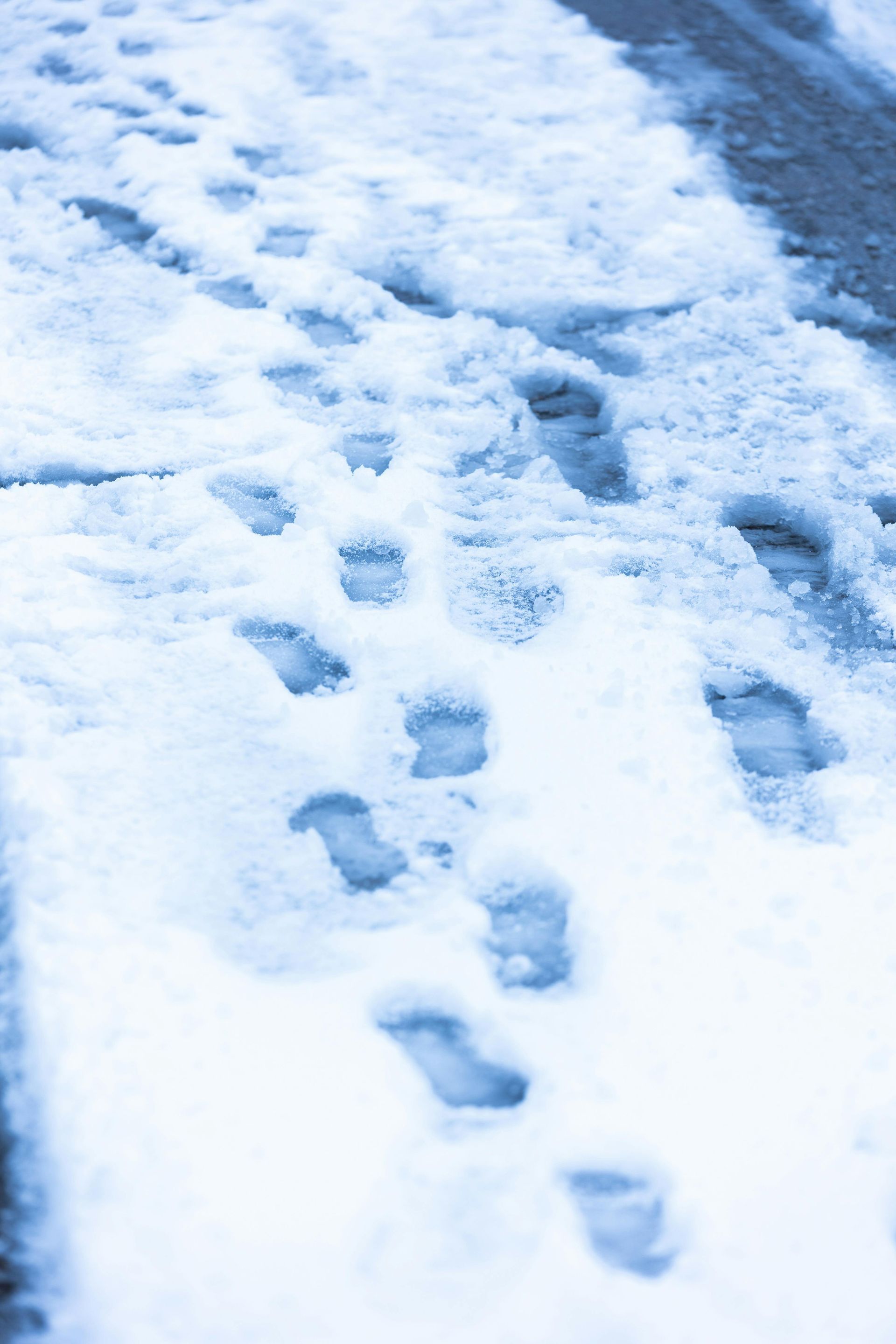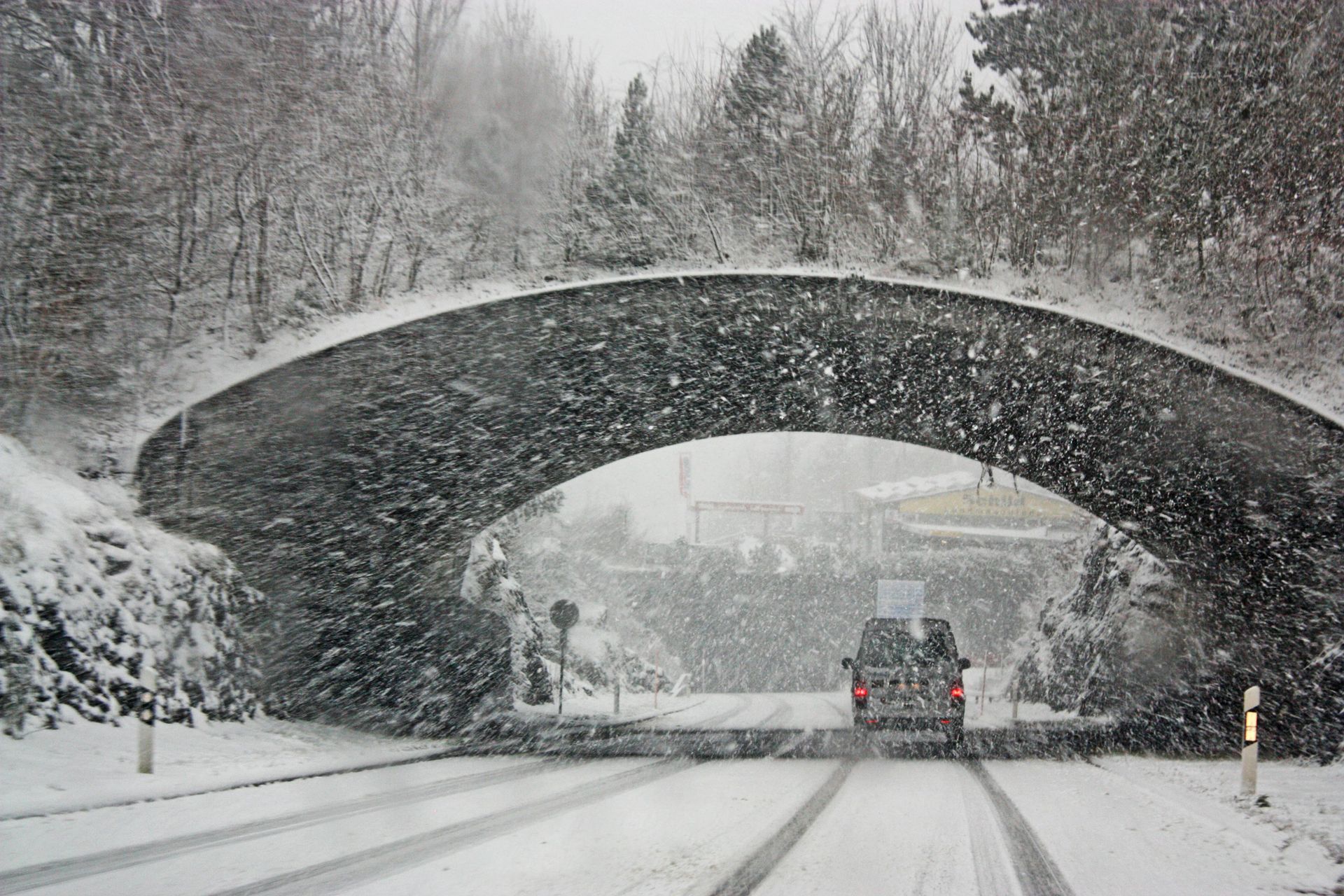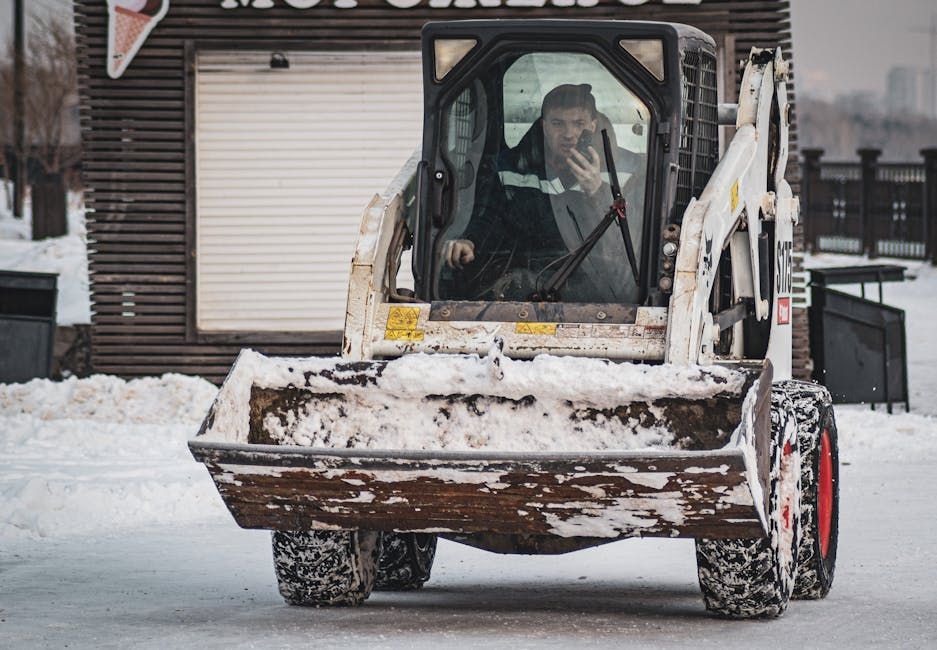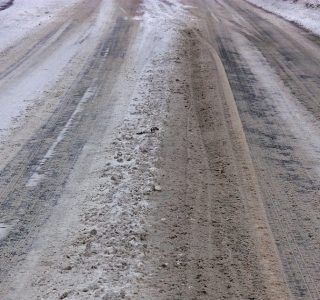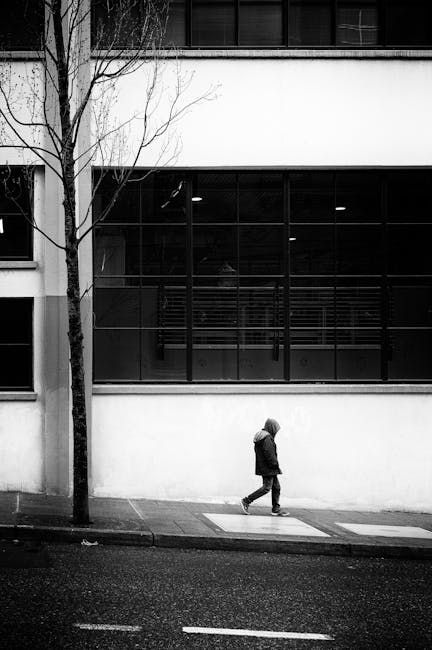Seattle Snow Removal Laws: What 'Timely Manner' Really Means in 2025
Brad Caton • November 5, 2025
When Seattle's sidewalks turn into ice rinks, property owners face more than just frustrated pedestrians—they face legal liability, financial penalties, and potential lawsuits that can cost hundreds of thousands of dollars. Yet the city's snow removal ordinance leaves one critical question maddeningly vague: what exactly does "timely manner" mean?
Seattle Municipal Code 15.48.010 has governed sidewalk snow removal since 1961, but its deliberately ambiguous language creates confusion for property owners every winter. Understanding what the law actually requires—and what happens when you fail to comply—can mean the difference between winter peace of mind and a costly legal nightmare.
The Law That Launched a Thousand Questions
Seattle Municipal Code Section 15.48.010 states: "It is the responsibility of the owner or occupant of private property to remove snow and ice on the sidewalks abutting his or her property in a timely manner and, if practical, prevent its becoming or remaining in an icy, ridged, uneven or humped condition or in a condition which is potentially hazardous to users of the public sidewalks."
That's it. The entire ordinance consists of a single sentence that manages to be both crystal clear and frustratingly ambiguous. You must clear your sidewalk "in a timely manner"—but what does that actually mean? Within 12 hours? 24 hours? Before someone slips and falls?
The deliberate vagueness isn't an oversight. Unlike neighboring jurisdictions that specify exact deadlines—Everett requires clearance by noon, Yakima by 9 AM the next morning, and Tacoma within 24 hours—Seattle opted for flexibility. This approach acknowledges that winter storms vary dramatically in severity, duration, and temperature, making a one-size-fits-all deadline impractical.
But flexibility for the city means uncertainty for property owners.

What Seattle Enforcement Actually Looks Like
Following the February 2019 "Snowmageddon" that paralyzed the city for weeks, Seattle changed its approach to snow removal enforcement. Disability advocates, particularly from the group Rooted in Rights, successfully pushed the city to take sidewalk clearing seriously after wheelchair users found themselves trapped in their neighborhoods for two weeks.
In 2019, the Seattle City Council passed Council Bill 125945, which clarified the fine structure for non-compliance. Here's what property owners now face:
For Residential Properties: First violation results in a $50 fine after written warning, with additional fines possible for patterns of non-compliance.
For Commercial Properties: First violation brings a $250 fine after written warning, second violation increases to $500, third violation jumps to $1,000, and continued violations face escalating penalties.
The enforcement process typically begins with education rather than punishment. Seattle Department of Transportation (SDOT) street use inspectors patrol during snow events and initially provide educational materials in multiple languages when they encounter uncleared sidewalks. Only after a warning is issued—and ignored—do fines follow.
However, don't let the relatively modest fines fool you. The real financial danger comes not from city penalties but from premises liability lawsuits.
The $260,000 Question: Liability Beyond Fines
In 2020, a Seattle-area law firm settled a trip-and-fall case against both the City of Seattle and an adjacent property owner for $260,000. The 57-year-old victim tripped on an uneven sidewalk section, injuring her knee. Both parties initially disputed liability, but the plaintiff's attorney hired an expert witness, filed suit, and secured the substantial settlement on the eve of trial.
This case illustrates a critical reality: the city fine is pocket change compared to your potential liability exposure from slip-and-fall lawsuits. Washington State premises liability law holds property owners responsible for maintaining safe conditions for pedestrians on adjacent sidewalks, regardless of whether the sidewalk is technically city property.
To successfully bring a premises liability claim in Washington, an injured party must prove four elements: duty of care (the property owner owed a duty to maintain safe conditions), breach of duty (the owner failed to meet this standard by not removing snow or ice), causation (the uncleared sidewalk directly caused the fall), and damages (the fall resulted in compensable injuries).
For property owners, the legal burden becomes especially problematic because Seattle's "timely manner" standard gets interpreted through the lens of premises liability, not municipal code enforcement. A judge or jury evaluating whether you removed snow in a "timely manner" will consider factors like how long after snowfall stopped the accumulation remained, what the weather conditions were, whether the hazard was obvious to pedestrians, what preventative measures you took, and whether you were physically present and able to clear the sidewalk.
Settlements in Seattle slip-and-fall cases typically range from $10,000 to $50,000 for moderate injuries, but serious injuries can push compensation into six figures. Medical bills, lost wages, pain and suffering, and permanent disability all factor into damage calculations.
Decoding "Timely Manner": The Practical Standard
While Seattle refuses to establish a bright-line deadline, several factors have emerged from enforcement patterns, legal precedent, and practical guidance that help define what "timely manner" means in 2025.
The 12-Hour Benchmark: Although not codified, enforcement patterns suggest that clearing sidewalks within 12 hours of snowfall stopping represents a safe harbor for most residential properties. This timeframe appears in city communications and reflects the standard used by enforcement officials when determining whether to issue warnings.
The Daylight Hours Reality: Seattle recognizes that expecting homeowners to shovel during overnight snowstorms or in hazardous conditions is unreasonable. The practical interpretation focuses on clearing sidewalks during safe working hours after accumulation ends. If snow stops falling at 2 AM, you're not expected to start shoveling immediately—but waiting until the following afternoon might be pushing your luck.
The Ongoing Storm Exception: During multi-day snow events, property owners face a dilemma: clear continuously during the storm or wait until it ends? The law's "if practical" language provides some protection. Continuously clearing sidewalks during an active blizzard isn't practical or safe. However, allowing massive accumulation without any attempt at maintenance could still trigger liability, especially if neighboring properties managed periodic clearing.
The Proactive Protection Standard: The ordinance specifies that property owners should "prevent" hazardous conditions "if practical." This language encourages proactive measures like pre-treating sidewalks with ice melt before storms, clearing snow before it compacts into ice, applying sand or salt to prevent refreezing, and monitoring conditions during temperature fluctuations. Property owners who take these preventative steps demonstrate good faith compliance with the "timely manner" standard, even if conditions deteriorate between clearing efforts.
Where Snow Goes Matters as Much as When
Seattle's snow removal requirements don't end with clearing your sidewalk—where you put the snow carries legal implications too.
Prohibited Dumping Locations: You cannot dump snow onto public streets and roadways, sidewalks (including your neighbor's), public rights-of-way, around fire hydrants, near traffic signs or signals, or into storm drains.
The prohibition on dumping snow into streets addresses both safety and infrastructure concerns. Snow pushed into roadways creates hazards for vehicles and cyclists, while snow covering storm drains can cause flooding when temperatures rise. Additionally, Seattle's snowplows push street snow back toward sidewalks during clearing operations—if you've shoveled your sidewalk snow into the street, the city plow will likely return it to your walkway, creating a cycle of frustration.
Acceptable Snow Placement: You may place snow in your own yard or landscaped areas, on private property with permission, in areas where melting won't create hazards, or on the right side of your driveway (not the street side).
For property owners with limited yard space, this creates genuine challenges. The law requires removal but limits disposal options. This is where professional snow removal services become not just convenient but necessary—they have the equipment and knowledge to handle snow disposal properly.
The 2025 Reality: Climate Change and Enforcement Evolution
Seattle's snow patterns are changing. While the city averages only 6.8 inches of snow annually, winter events have become less predictable and occasionally more severe. February has emerged as Seattle's snowiest month, accounting for more than half of the last decade's snowfall.
This unpredictability makes preparation more important than ever. Property owners can't rely on Seattle's reputation for mild winters—recent years have proven that when snow comes, it can be substantial, prolonged, and paralyzing.
Seattle's enforcement approach has evolved accordingly. Following the 2019 storms and disability advocacy efforts, the city invested in multi-language educational campaigns, increased street use inspector patrols during snow events, better coordination with emergency services, enhanced reporting systems through the Find It Fix It app, and public awareness about accessibility requirements.
The message is clear: Seattle takes sidewalk accessibility seriously in 2025, and property owners who ignore their obligations do so at their peril.
Professional Snow Management: The Smart Protection
Given the vague "timely manner" standard, escalating enforcement, and substantial liability exposure, professional snow removal services have shifted from luxury to liability protection. This is where companies like Invictus Snowfighters—the only ISO SN9001 certified snow removal company in the Pacific Northwest—provide critical value.
Professional snow fighters offer several advantages over DIY sidewalk clearing:
Guaranteed Response Times: No more worrying whether you've met the "timely manner" standard. Professional services contractually commit to specific response times, creating documentation that you took reasonable steps to maintain safe conditions.
Proper Equipment and Materials: Heavy-duty commercial equipment clears snow more effectively than consumer-grade shovels. Professional-grade de-icing products like LEED-compliant liquid ice melt prevent re-accumulation and work in lower temperatures than typical rock salt.
Liability Documentation: Professional services provide GPS-tracked verification of service, timestamps, and detailed records—exactly the documentation you need if someone claims you failed to clear your sidewalk in a timely manner.
24/7 Availability: Snow doesn't fall on a convenient schedule. Professional services monitor conditions around the clock and deploy crews regardless of whether it's 3 AM on a Sunday or during your family vacation.
Preventative Treatment: Proactive anti-icing treatments before storms prevent snow and ice from bonding to pavement, making removal easier and reducing the hazard period that creates liability exposure.
For commercial properties facing $250 first-violation fines and heightened liability exposure from higher pedestrian traffic, professional snow management isn't optional—it's essential risk mitigation.
Your Action Plan for Seattle Winters
Understanding Seattle's "timely manner" requirement means thinking proactively rather than reactively. Here's your practical compliance strategy:
Before Snow Season: Secure professional snow removal service with guaranteed response times, stock ice melt and necessary equipment if handling removal yourself, document your properties with photos showing normal sidewalk conditions, review your liability insurance coverage limits, and create a contact list for emergency snow service providers.
When Snow is Forecast: Monitor weather forecasts closely, apply preventative de-icing treatments to sidewalks, clear storm drains near your property, arrange for service coverage if you'll be out of town, and alert your snow removal service about upcoming weather.
During Snow Events: Begin clearing as soon as safely possible during daylight hours, clear a minimum 36-inch path width (full sidewalk width when practical), remove snow to your property and not the street, apply ice melt to prevent refreezing, document your clearing efforts with time-stamped photos, and check conditions multiple times during multi-day storms.
After Snowfall Stops: Complete thorough clearing within 12 hours, pay special attention to potential ice formation, monitor for refreezing as temperatures fluctuate, and maintain clear pathways until all ice hazard has passed.
The Bottom Line
Seattle's "timely manner" standard for snow removal deliberately avoids rigid definitions, creating both flexibility and uncertainty. While the city issues relatively modest fines for non-compliance, the real financial risk comes from premises liability lawsuits that can reach hundreds of thousands of dollars.
Property owners who understand their obligations—and take proactive steps to meet them—protect themselves from both city penalties and personal injury claims. Whether you choose professional snow removal services or handle clearing yourself, the key is demonstrating good faith efforts to maintain safe sidewalks promptly after snowfall.
In Seattle's unpredictable winter climate, "timely manner" ultimately means: as soon as practically possible under the specific conditions, but generally within 12 hours of snowfall ending, using methods that prevent hazardous conditions from forming or persisting.
The property owners who get sued aren't the ones who cleared their sidewalks 13 hours after the snow stopped—they're the ones who didn't clear at all, or waited days while ice accumulated. Don't be that property owner.
Recent Posts
